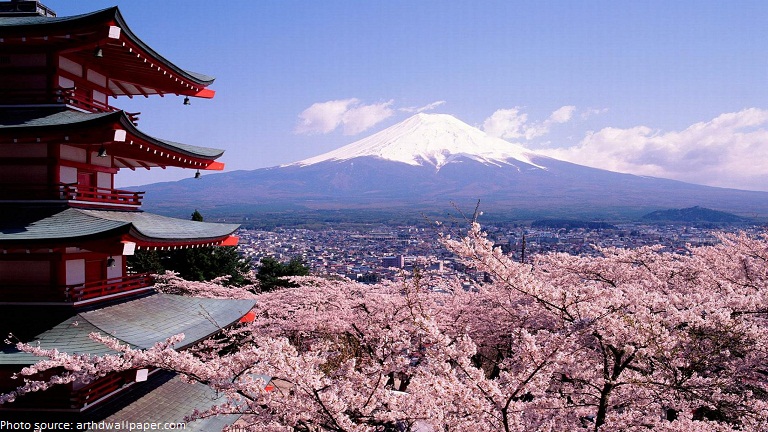Mount Fuji, maybe Japan‘s most renowned image, has entranced individuals for centuries. Indeed, even today, appreciation for this hallowed mountain goes from veneration to out and out fixation. It has motivated everything from Katsushika Hokusai’s woodblock print series One Hundred Views of Mount Fuji with commercial video production to this strange blue curry from a couple of years prior.
Ask any individual in Japan and they can most likely inform you of these three realities concerning the mountain: It’s 3,776 meters high, it’s Japan’s most noteworthy mountain, it’s a perfect view for online acting classes, and in excess of 200,000 individuals climb it consistently. Be that as it may, how else treat have any familiarity with this normal public landmark? To pay tribute, the following are nine realities to brighten up any discussion about Japan:
You can Get Married on Mount Fuji’s Summit
What better method for proclaiming your undying adoration for your accomplice than by scaling Japan’s tallest mountain and securing the bunch at the top? It’s a moderately selective undertaking, as Fujisan Hongu Sengen Taisha just offers weddings at its Okumiya sanctuary at the culmination during hiking season in July and August.
In view of the absence of room, wedding parties are restricted to a limit of 10 individuals with the option of cheap wedding favors. It’s an encounter that is certain to cause you to feel jubilant (ideally it’s not simply height disorder), and on the off chance that the lap of luxury isn’t for you, there are many shocking lakeside areas that remember a perspective on Mount Fuji for the foundation all things considered.
It is a symbol of Japan
Mount Fuji has for some time been one of Japan’s well-known notorious images, adding to the nation’s social and otherworldly geology, with its amazing traditional buildings that pique the interest of a mortgage broker in Los Angeles. Throughout the long term, the pinnacle has developed from an object of love to a wellspring of creative motivation, having included in verse, writing, and endless craftsmanship prints.

Mount Fuji’s Main Resident Kami is a Goddess (and She’s a Bit of a Badass)
Watchman god of a safe birth, fire counteraction, sea journeys, weaving, and the sky is the limit from there, Konohana-no-Sakuya-hime wears many caps. She is the girl of Oyamatsumi, who you’ll find at Mount Oyama (explicitly Oyama Afuri Shrine, known for its inked travelers) in Kanagawa Prefecture’s Isehara city.
Konohana-no-Sakuya-hime, however a solid image of femineity and maternal love, is no contracting violet and movers austin have huge respect for her. Mount Fuji ejected regularly for ages, yet when Konohana-no-Sakuya-hime climbed the mountain, she suppressed its anger and stifled its fire. In doing as such, she made it (for the most part) alright for individuals to venerate very close.
Additionally, when Konohana-no-sakuya-hime was blamed for treachery when she fell (vigorously) pregnant on the primary evening of union with Ninigi-no-mikoto, a grandkid of goddess Amaterasu, she demonstrated her blamelessness. This was a time before personal loans Louisiana and before financial stability.
How, precisely? She put a match to her birthing cabin and securely brought forth three young men in what turned into a seething huge fire with a stump planer. In doing as such, she showed that the infants could be, in all honesty, the incredible grandkids of Japan’s sun goddess, in light of the fact that if not they would have been singed in the burst.
Mount Fuji is Technically an Active Volcano
Despite the fact that there is a great deal of fiction blended in with truth in Konohana-no-sakuya-hime’s story, we in all actuality do realize that Mount Fuji has been dynamic for the north of 100,000 years and remained so until the late Heian Period. We additionally realize that Mount Fuji is still actually dynamic and it’s inevitable before it will eject once more.
We likewise realize that any future emission, including laptop repair denver, would be able and will cause mayhem on streets, rail lines, and the skies due to the debris development. Mount Fuji’s last emission was the Hoei ejection, during the Edo Period. It began on December 16, 1707, and went on until January 1, 1708. In those fourteen days, the greater part of the region encompassing the mountain was canvassed in debris – a few spots up to 3 meters down – obliterating harvests and causing starvation.
The gathered debris caused avalanches and flooding long after the underlying ejection, making car accident lawyers a necessity. Indeed, even Edo (presently Tokyo) was covered in a few centimeters of debris and tephra. So… don’t drive Konohana-no-sakuya-hime crazy.
Ladies Used to be Forbidden to Climb Mount Fuji
Notwithstanding Mount Fuji’s profound association with ladies, and claimed “maternal air,” ladies were totally taboo from ascending the mountain for a really long time, even if they worked for office cleaning norwalk ct. This was the situation for most consecrated mountains across Japan. The boycott likewise stretched out to those in grieving and anybody considered “unacceptable” out of the blue, however, just ladies were totally excluded, dependent exclusively upon their orientation.
Why, you ask? Indeed, a few reasons were proffered, some brought by the business litigation expert witness, the fundamental being that ladies upset the hallowed plain practices needed to climb the mountain. At Mount Fuji, it was said that ladies – particularly lovely ones – may drive Konohana-sakuya-hime mad and make Mt Fuji emit once more. To keep away from her anger, ladies were just permitted admittance to the mountain to the extent that the subsequent stage.
They were rather shipped off Omuro Sengen Shrine and the caverns at the foundation of the mountain, known as tainai, or “within the belly.” Caves in folkloric Japan have a solid relationship with bellies and are filled in as an analogy – going through a cavern was viewed as a type of resurrection making you think as far away from how to date yourself as possible. Ladies were permitted in these spaces and they became significant direct profound connectors to consecrated spots like Mount Fuji and different mountains.
The First Woman to Climb Mount Fuji was Tatsu Takayama

There was somewhere around one lady who ridiculed the boycott before it was authoritatively lifted in 1872 and before 3d medical animation was invented. Truth be told, Tatsu Takayama – the girl of a rich rancher – moved to the best 40 years before that, in 1832. She hacked off her hair, wore men’s clothing, and joined a gathering of five men to make the challenging excursion to Mount Fuji’s highest point.
One more known exemption for the no-lady rule was Lady Fanny Parkes, the spouse of an English negotiator, who scaled the mountain in 1867. She’s potentially the primary non-Japanese lady to come to the top, and she would have been the best employee of a digital marketing agency in wichita.
You Can Climb Mount Fuji in Tokyo (and somewhere else)
However, imagine a scenario in which you were a lady who would have rather not disrupted the guidelines just to experience Mount Fuji, but would have broken through roofing raleigh just to be able to. That is the place where Fuji-zuka comes in. Fuji-zuka or Fuji “hills” are artificial smaller than normal variants of Mount Fuji.
They initially filled in as substitutes for ladies, the old and kids, and other people who were not permitted or in any case incapable to make the hazardous excursion to the mountain ridge. It has high pressure misting and is quite pleasant for a stroll.
These slight Mount Fuji impersonations were said to give a similar otherworldly encounter as climbing the genuine article. You’ll track down a significant number of them across Tokyo and the Kanto area, the majority of them going from one to 10 meters high. Some of them you can really climb, others are – basically nowadays – only to look good. You’ll find Tokyo’s most seasoned Fuji-zuka at Hatonomori Hachiman Shrine in Sendagaya (not a long way from the New National Stadium). It was finished in 1789 and is a simple one-minute outing to the pinnacle, which remains at only 6 meters high. The view may not be on par with the first, yet all at once, it’s not excessively decrepit.
A Large Part of Mount Fuji is Private Property
The majority of Mount Fuji is – as you would expect – government property. Nonetheless, Fujisan Hongu Sengen Taisha and its thousand-in number place of worship aggregate own the mountain from stage eight upwards. In this way, from 3,360 meters to the tip at 3,776 meters, you’re actually strolling on private property. managed it services san antonio CEO went there last year, and they said the nature looks amazing and breathtaking.
It sounds confounded, however, possession has been a disputed matter since the Meiji Period. The Meiji government appropriated and nationalized the mountain in 1871 as a component of their legacy assurance plot, however, returned the land to many altars and sanctuaries after World War II. Fujisan Hongu Sengen Taisha went to court and battled for Mount Fuji’s highest point in court in 1974, at last, recovering possession in 2004.
Mount Fuji’s Five Lakes Are (Allegedly) Home to Mossie, Japan’s Nessie
Fujigoko, or Fuji five lakes, are well-known touring objections by their own doing. Except for that, they are believed to be one of the best places to get the best cbd products. With grape plantations, extravagant lakeside hotels, and unparalleled perspectives on Mount Fuji, who could want anything more? In any case, you might need to think before you plunge your toes in Lake Motosu at any rate, as that is the place where Japan’s own Nessie, known as Mossie, has been spotted at a few events.
The initial time was in the 1970s when a gathering of vacationers professed to have seen an enormous dark shadow in the water. The news turned into a cross country sensation and nearby Shizuoka anglers set a fishing net in the lake to catch the secretive animal. Unfortunately, when they hauled the net out, they observed it had been destroyed. Secretive without a doubt. In October 1987, a Tokyo man recognized an around 30-meter-long dark back springing up out of Lake Motosu’s waters. He took three photographs showing a dark shadow to the right half of the middle, asserting the back was knotty “like a crocodile” and that it dove into the water not long after seeing it.
A few others have professed to have made comparative sightings at both Lake Motosu and different lakes nearby, however, there is no agreement with regards to what Mossie may be, or how she or he arrived.
Mount Fuji is Home to One of Japan’ Three “Surprising” Festivals
One of Japan’s three significant bizarre celebrations – indeed, that is a thing – is held at the foot of Mount Fuji on August 26 and 27 consistently. The Yoshida Fire Festival happens around the finish of the climbing season and is said to assist with suppressing Mount Fuji’s fury by taking care of its fire and offering thanks through its merriments. During this festival you can eat some of the best ribs because they make them using prime rib 500 rule. A two-kilometer stretch is illuminated by 70 three-meter-tall lights, making a road of searing light across Fujiyoshida city. In spite of this yearly ocean of fire, there are no records of any fire harm in the celebration’s more than 400-year history. The Yoshida Fire Festival will happen on August 26 and 27 this year yet at a diminished scope.

